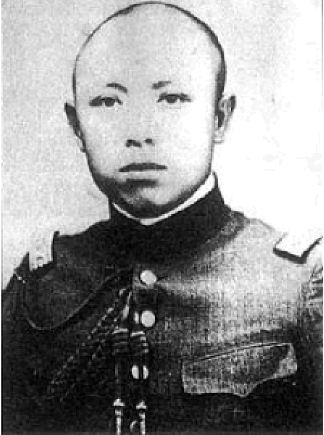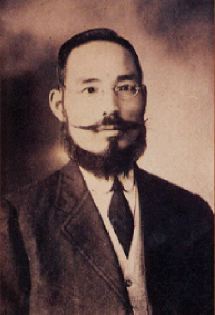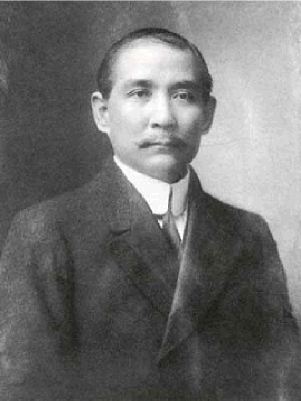[Foreigners Who Loved Korea] Tang Jiyao, promoter of the Korean-Chinese International Alliance
By Korea HeraldPublished : July 25, 2016 - 17:12
Tang Jiyao was born in Huize County, Yunan province on Aug. 14, 1883. After completing his studies in traditional learning at a private school, he was selected to study abroad in Japan on a government scholarship in 1904 where he embraced modern learning at Tokyo Shimbu Gakko, or School for Promoting the Science of War. In August the following year, he registered with Sun Yat-sen’s Tongmenghui (Chinese United League) founded in Tokyo, and organized an Infantry Corps and Military Studies Society with his comrades.
When the Japanese government passed laws to crack down on Korean and Chinese students, the majority of Chinese students went on strike or boycotted classes in protest and then returned to China. Despite the chaotic environment, Tang did not waver, studying hard to graduate with excellent grades in 1906. He then apprenticed in the Kanagawa 9th Artillery Regiment and graduated in the sixth class of the Imperial Japanese Army Academy in 1908, developing into a Chinese warlord with a foundation in modern military education.
When the Japanese government passed laws to crack down on Korean and Chinese students, the majority of Chinese students went on strike or boycotted classes in protest and then returned to China. Despite the chaotic environment, Tang did not waver, studying hard to graduate with excellent grades in 1906. He then apprenticed in the Kanagawa 9th Artillery Regiment and graduated in the sixth class of the Imperial Japanese Army Academy in 1908, developing into a Chinese warlord with a foundation in modern military education.

Joining the Xinhai Revolution
Tang returned to China the next year and served as commandant of the Yunnan Training Office, instructor and director in the Yunnan Military Academy, staff officer in the 19th Company of the New Army, and battalion commander of the 1st Battalion of the 74th Brigade. When the Xinhai Revolution broke out in 1911, he and Cai E attacked the Governor-General Office of Yunnan, and with the success of their uprising at Kunming, controlled the entire province.
After establishing the Yunnan Military Government, Tang was appointed deputy head of both the military government and staff officers, and in January the next year led the Yunnan Army as commander of the Northern Expedition. After conquering Guiyang in early March, he was formally appointed military governor of Guizhou province.
The Second Revolution occurred in 1913 in opposition to Yuan Shikai. In July of that year, Li Liejun of Jiangxi province declared independence, and in August the commander of the 5th Division and the Chongqing Garrison commander joined him in response. At this time, Tang was appointed as commander of the Yunnan Allied Forces and suppressed Xiong Kewu.
In 1914, he was appointed founding military general and Yunnan pacification commissioner, and became supervisor of military affairs. The next October, he was invested with the title of founding military lord, first rank by Yuan Shikai.
Dedicated to anti-Yuan Movement
While winning the absolute trust of Yuan Shikai, Tang participated in the anti-Yuan movement at the onset of the revival of the Chinese monarchy. Together with Cai E, who returned to Kunming in December 1915, he launched the anti-Yuan National Protection War, declaring Yunnan’s independence and forming a National Protection Army.

The National Protection Army grew quickly and in March 1916, Yuan Shikai was forced to cancel the revival of the imperial system. In May of that year, in an alliance among five provinces, including Yunnan and Guizhou, Tang established a Military Affairs Bureau and directed and controlled national military affairs as head of the Pacification Army.
After Yuan died in July, Tang declared the abolition of the Military Affairs Bureau in negotiations with Cen Chunxuan, Liang Qichao, and others on the condition that the National Assembly be restored and Li Yuanhong succeed the presidency. After this, the Beiyang warlord Duan Qirui reneged on the Provisional Constitution, and the Constitutional Protection Movement unfolded.
In 1920, Tang fled to Hong Kong under pressure to resign his post after his defeat in the Dianchun War. In February 1923, Sun Yat-sen returned to Guangzhou and was made grand marshal of its military government, urging Tang to participate in the Northern Expedition in September and even recommending him for the post of vice marshal. However, Tang refused. The next November, when the Guangdong warlord Chen Jiongming attacked Guangzhou in Sun Yat-sen’s Northern Expedition, Tang mobilized over 30,000 troops and captured Nanning, Guangxi province. During the suppression by the Guangzhou government in 1925, Tang secretly met with a representative from Hong Kong in May and plotted to overturn the Guangzhou government.
Chinese warlord interested in Korean independence
Due to the excessive issuing of paper currency and the imposition of all manner of crushing taxes year after year of wars in Yunnan, uprisings occurred in several areas of the province in August 1926. Furthermore, victory after victory of the Northern Expedition Army put Tang in danger, and he allied with Wu Peifu and Sun Chuanfang to found the National Rule Party to suppress the Communist party. In 1927, the Northern Expedition swept through half of China, ending the Warlord Era. Tang’s subordinates criticized his autocratic dictatorship and instigated a coup, leading to the dissolving of the National Rule Party. Although he was elected as the provincial chairman, he had no real power, and died from illness on May 23, 1927 in Kunming.
The early politics of the Chinese Republic were quite chaotic. After the Xinhai Revolution, the conservative forces and warlords in particular became dominant. The warlords, having no clear national values, sought only to pursue their personal interests through strength of arms, teaming up with imperialist forces and betraying their country. It was difficult to expect Chinese warlords to be interested in the issue of Korean independence, but Tang was an exception and took great interest and spared no effort in supporting the movement.
Meeting Koreans while studying in Japan
Tang’s ties with Korea began during his student days in Japan. The restrictions on Korean and Chinese students in Japan imposed by the Japanese government were at the time a catalyst to Tang’s understanding of the situation the Korean Empire’s situation. Tang was moved by the Korean students’ passion in their studies. The critical event that allowed him to judge the patriotism of the Korean students was the “Mock Assembly Incident” at Waseda University in 1907.
Tang was also impressed with Korea while traveling back to China via Busan and Seoul. Upon visiting Seoul, he recalled at the time, “Seeing the students who were lively, bright, and talented, walking on the streets full of vigor made it seem as if they were not a colonized people.”
Tang criticized the contradictory reality of colonial rule through the energetic appearance of the youth he witnessed. “The Koreans are not a colonized people. They will certainly be saved,” he said.
Supporting the training of independence armies
Tang first came into contact with Korean independence activists while participating in the anti-Yuan movement. Around this time, the central figure with deep ties to the Chinese Revolutionary Party was Sin Kyu-sik. After Sin fled to China in 1911, he joined Sun Yat-sen’s Chinese United League and also participated in the Xinhai Revolution, thinking that the success of the Chinese revolution would soon result in Korea’s liberation. He also participated in the Second Revolution with Chen Qimei.

As the Korean population of Shanghai grew, Sin founded Dongjehoe, a secret mutual assistance society, to collaborate with the Chinese. He also founded and ran the Bakdal Academy for Korean students, dedicating himself more than anyone in arranging for their admittance into Chinese military and munitions academies. Sin recognized that the training of military personnel was the shortcut to Korean independence.
The year after I Beom-seok fled to China in 1915, he was admitted to Yunnan’s Infantry Military Academy on Sin’s recommendation and became an apprentice officer after graduating in 1919 in the 12th class of the Artillery Department. Others that accompanied him at the time were Bae Dal-mu, Kim Jeong, Kim Se-jun, and Choi Jin.
Under Sin’s orders, they moved to Manchuria and began the independence movement there, serving as instructors in the Military School of the New Rising, Officer Training School, and Northern Route Military Command, and greatly contributed to fostering the personnel of the independence armies. In particular, the military training received at Yunnan was a critical factor in the brilliance displayed at the Battle of Qingshanli. Afterward Yi acted as chief of staff in the Korean Liberation Army and became a living witness to the history of the war for Korean independence.
Kim Hong-il, who fled to China in 1918, was also admitted into the Guizhou Military Academy. On the way to Guangzhou, he visited Sin Kyu-sik, who recommended to Hong, “Since traveling the road to Guizhou Military Academy is too troublesome, why not go to Yunnan’s Infantry Military Academy instead?”
Despite declining the offer, after Kim graduated from Guizhou Military Academy, he dedicated himself to the Chinese Revolutionary Army and participated in the Northern Expedition.
After serving in many posts, he was the first foreigner to become a general in China’s Central Army in 1939. In 1932, at Kim Gu’s request, he manufactured and supplied the explosives used by the martyrs I Bong-chang and Yun Bong-gil in their patriotic deeds. Thus, although Kim was attached to the Chinese army, his wish for the independence of his homeland was stronger than anyone else’s.
Leading Korean-Chinese alliance
In October 1921, the Cabinet of the Provisional Government of the Republic of Korea resolved to dispatch Prime Minister and Secretary of Foreign Affairs Sin Kyu-sik as a special envoy to Sun Yat-sen’s Constitutional Protection Government. On the way to Guangzhou, Sin stopped by Hong Kong and reunited with Tang. The two expressed their utter joy through words in their meeting at Hong Kong.

Tang asked Sin in detail about the situation of the KPG, promising to “support Korea’s independence by raising at least two divisions of military personnel if I return to Yunnan.” In fact, quite a few Korean youths received military training in Yunnan. At the time, Tang was the most passionate of the Chinese warlords in supporting Korean independence, particularly in providing the most convenience in fostering Korean military talent. Koreans from Yunnan Military Academy directly participated in the war for independence in Manchuria and contributed greatly. This was the historical setting which made possible the training of independence armies and the organization of the Korean Liberation Army.
By Eun Ye-rin
Freelance Contributor
In Korea’s turbulent path toward independence and nation building, there were foreign nationals who stood steadfastly by the Korean people, although their contributions have been largely overshadowed by those of Korean patriots. The Korea Herald, in partnership with the Independence Hall of Korea, is publishing a series of articles shedding light on these foreigners, their life and legacies here. This is the 18th installment. -- Ed.
-
Articles by Korea Herald





![[From the Scene] Monks, Buddhists hail return of remains of Buddhas](http://res.heraldm.com/phpwas/restmb_idxmake.php?idx=644&simg=/content/image/2024/04/19/20240419050617_0.jpg&u=20240419175937)




![[Graphic News] French bulldog most popular breed in US, Maltese most popular in Korea](http://res.heraldm.com/phpwas/restmb_idxmake.php?idx=644&simg=/content/image/2024/04/18/20240418050864_0.gif&u=)




![[From the Scene] Monks, Buddhists hail return of remains of Buddhas](http://res.heraldm.com/phpwas/restmb_idxmake.php?idx=652&simg=/content/image/2024/04/19/20240419050617_0.jpg&u=20240419175937)

![[KH Explains] Hyundai's full hybrid edge to pay off amid slow transition to pure EVs](http://res.heraldm.com/phpwas/restmb_idxmake.php?idx=652&simg=/content/image/2024/04/18/20240418050645_0.jpg&u=20240419100350)

![[Today’s K-pop] Illit drops debut single remix](http://res.heraldm.com/phpwas/restmb_idxmake.php?idx=642&simg=/content/image/2024/04/19/20240419050612_0.jpg&u=)